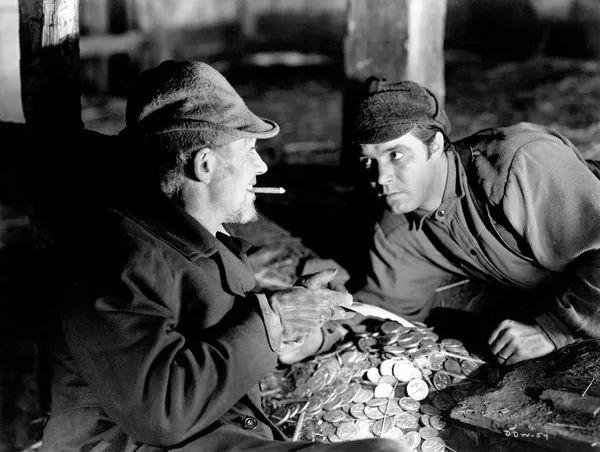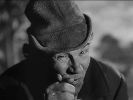Eye For Film >> Movies >> The Devil And Daniel Webster (1941) Film Review

A stirring piece of Americana memorably parodied in The Simpsons Halloween special Treehouse Of Horror IV, The Devil And Daniel Webster is an excellent reworking of the Faust story, which relocates the German myth to a small New Hampshire community in the mid-19th century, where the Devil’s temptation of everyman farmer Jabez Stone comes to represent the battle for the soul of the fledgling American nation.
Adapted from a short story by Stephen Vincent Benet, William Dieterle’s film tells the story of down-on-his-luck farmer Jabez (James Craig) who curses his luck once too often and, in doing so, attracts the attention of a certain Mr Scratch, aka the devil, portrayed with relish by an Oscar-nominated Walter Huston. In return for Stone’s soul, signed and sealed in his own blood, Scratch offers Jabez seven years of prosperity, successfully tempting the farmer with a hoard of Indian gold which he magically unearths beneath his barn. As Stone’s fortunes transform dramatically overnight so does his character, as he quickly changes from being a likeable family man, beloved by all, into an avaricious miser, who enslaves the other farmers within the community and forsakes his wife (Anne Shirley) for the seductive charms of his new mistress, Belle (Simone Simon).

The story’s moral centre revolves around Stone’s eventual acknowledgement of the error of his ways when his debt to the devil becomes due. He enlists the help of celebrated Massachusetts lawyer and politician, Daniel Webster, who demands that as an American citizen, Stone is protected by the constitution and must be granted a trial by jury. Cue the final showdown for Jabez Stone’s soul, pitting Webster’s American patriot values of freedom and justice against the satanic forces of greed, lust and pride – the tools by which Stone has been enslaved.
Despite the highly moralising subject matter and occasionally reactionary tone, this is an impressively experimental piece of cinema from director Dieterle, which retains the power to surprise its audience more than six decades after its initial release. Take, for example, our first encounter with Daniel Webster, in which he is subject to the machinations of Huston’s devil - represented as a menacingly ethereal, larger-than-life shadow on the wall behind Webster - his whispered voice is all the more disturbing since the shadow is his only presence in the room. Similarly innovative is a ghostly ball which takes place at Stone’s mansion; disturbing for it’s cleverly out-of-focus camera work, which gives the revellers an ominous ghostly appearance, very apt for the souls of the damned!
This surreal, ethereal quality is present throughout the film, aided in no small part by Huston’s exceptional performance (you can almost see the cloven hooves and pitchfork!) as an impish, ebullient Mephistophelian figure, whose roguishly expressive features and gestures somehow manage to be disarming and sinister at the same time. The film’s other truly notable performance is Simone Simon’s bewitching and beguiling turn as satanic temptress Belle, who lures Stone away from his wife and provides the catalyst for his transformation into a servant of greed and lust. Like Huston, she manages to convey the contradictions of her character, maintaining a sinister edge while effortlessly fulfilling her role as objectification of male fantasy.
The barn dance scene immediately following the birth of Jabez’s child is one of the most potent sequences in the film, as Dieterle quick cuts expertly between shots of the devil playing the fiddle at demonic speed and Belle spinning across the room, pursued in vain by the captivated Jabez. The incredible high-speed performance of Pop Goes The Weasel in this scene (which is actually four separate violin solos laid on top of one another) is just one example of why Bernard Hermann’s score deservedly won an Oscar, skilfully maintaining the tension throughout the film and displaying a virtuoso command of the music, which seems entirely appropriate to its demonic subject matter.
Certain aspects of the film’s moral stance and a couple of the performances on show may seem a little old fashioned at a distance of more than 60 years from the initial release, but this is nevertheless an impressive piece of classic American cinema, which certainly deserves to be revisited by a modern audience.
Reviewed on: 02 Mar 2009


















